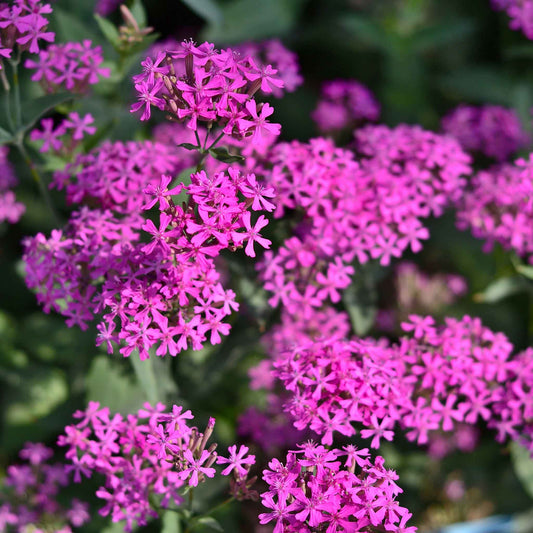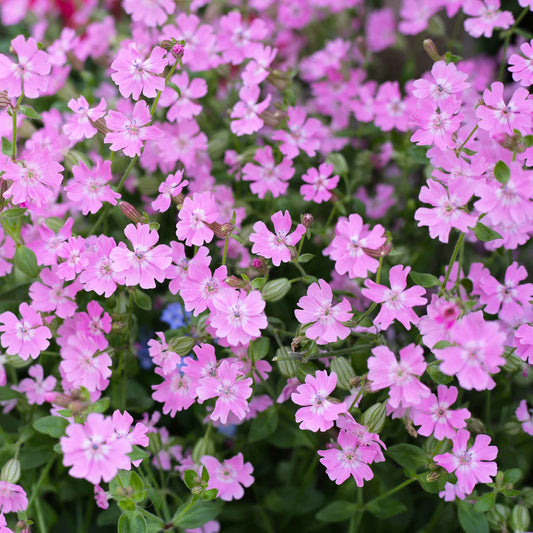-
main-collection-product-grid

Catchfly Seeds
Whether or not the sticky seedpods catch flies, we love the tiny pink bloomsCatchfly Seeds
Whether or not the sticky seedpods catch flies, we love the tiny pink bloomsRegular price As Low As $4.99Regular priceUnit price per -
main-collection-product-grid

Nodding Catchfly Seeds
Drooping flowers signify this plant is perfectly healthyNodding Catchfly Seeds
Drooping flowers signify this plant is perfectly healthyRegular price As Low As $4.99Regular priceUnit price per
About our heirloom silene seeds
- Offers lovely and fragrant summer blooms
- Deer resistant and drought tolerant
- Fantastic for rock gardens
- Easy to grow pollinator attractor
A rose by any other name would smell as sweet, and silene in all of its forms is just as exquisite. Heirloom silene has a lot of other names. This low-maintenance wildflower, also known as campion, drooping catchfly, nodding catchfly, sweet William, and none-so-pretty, blooms in clusters of vibrantly colored flowers from mid to late summer. The catchfly gets its name from the sticky sap on its stems, which may hold little insects.
Plants of the genus Silene should be started from seed in late fall or early spring, regardless of variety. They're also great for container gardening, bursting over the sides of the pot in a riot of pink and purple. As a result, they look great along the tops of garden walls or along the edges of other height-gradiented landscaping. Plant your heirloom silene as a groundcover beneath plants like roses to help preserve the soil and to add color to a garden walkway.
Heirloom silene germinates readily, and, like many other wildflowers, it is aided by the chill of winter or the final frost. Seeds can be stored in the refrigerator for three to four weeks before planting. Even after the plant has germinated, keep the soil wet after planting. Catchfly is hardy in USDA zones 5 through 8, and it enjoys mild shade in hotter climates. Pests are rarely an issue, and catchfly seems unconcerned about them. Make sure the soil is well-drained, and don't overwater.
Poppies and salvia are great companion plants for heirloom catchfly. With blue sage or Eden Brothers' May Night Salvia Roots, both sweet William and nodding catchfly would be quite lovely! Lavender, echinacea, and yarrow are good choices for a rock garden. For a butterfly or bee garden, asters and bee balm will attract numerous pollinators!
Though native to Europe, catchfly has spread over most of the United States and makes a lovely addition to wildflower and prairie gardens. For improved growth, prune dead and fading blooms. Allow the blooms to wilt and wait for the seed pods to develop and split if self-seeding is desired.
For more information about planting, growing, and caring for silene flower seed, see the Silene Seeds Planting Guide.

